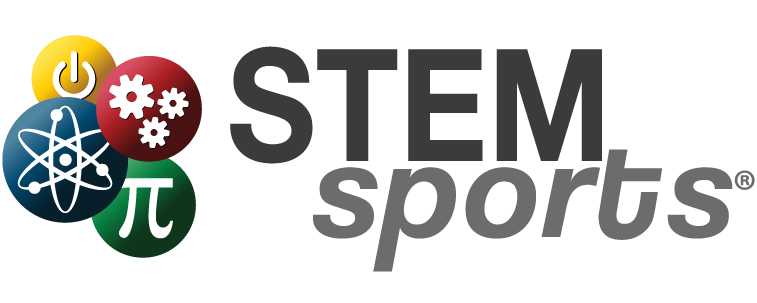Table of Contents
- Consider which approach you want to take
- Create an inclusive environment
- Vary the topics to cater to different interests
- Consider adding in formative assessments
- Use the engineering design process (Ask, Research, Imagine, Plan, Create, Test, Improve)
- Create real-life scenarios
- Middle School STEM Curriculum from STEM Sports®
- Additional Resources
Teaching science, technology, engineering, and mathematics (STEM) to middle school students presents a unique opportunity for educators and administrators. By this point in a student’s education, they have likely decided what their favorite subjects are and if they like STEM. Depending on their current feelings about STEM education, educators have to get more creative to engage students and present the curriculum in a way that students find exciting.
STEM education has countless benefits to students and is essential to their future success in their education and life. With STEM jobs rising faster than any other workforce, it is extremely important for educators to provide students with quality STEM education that gives them the skills they need to fill these jobs in the future. In this article, STEM Sports® offers tips for teaching STEM to middle school students in the classroom, in afterschool programs, at home, or in summer camps. This comprehensive guide will talk about everything from approach and execution to creating an environment for students.
Consider which approach you want to take
There are a variety of different teaching methods used when facilitating STEM lessons. Below is a list of three common and effective approaches educators can use with middle school students.
- Project-Based Learning: This approach utilizes real-world examples to engage students in meaningful and impactful hands-on projects. This can be done individually or in groups over multiple days and weeks. Long-form lesson plans are a great way to get students personally invested in their education and excited about finding a solution.
- Problem-Based Learning: In this approach, students take control of their education by working individually or in small groups to solve open-ended questions. By giving students power over their own education, they are improving their leadership collaboration, critical thinking, and problem-solving skills. These 21st-century skills are highly sought after during job interviews. By allowing middle school students to practice these skills early on, we are better preparing them for future success.
- Inquiry-Based Learning: This approach utilizes real-world examples to allow students to make connections between what they are learning and the world around them. During these lessons, educators should promote students to ask questions and think critically about how things connect and why it matters.
Create an inclusive environment
Creating an inclusive classroom environment is extremely important to ensuring your middle school students feel comfortable and confident during STEM lessons. These topics are often considered hard and students need to feel like they are able to ask questions and make mistakes without being embarrassed. This can be done through the overall attitude of the teacher and administrator. Teach students that learning is fun – loosen up and make learning an exciting activity!
Another way educators can create an inclusive STEM learning environment is by giving students role models to look up to of the same race and gender. It is impactful when students can see someone like them who is successful in life. Through online videos or guest speakers, introduce students to different individuals at the collegiate or professional level who are excelling in STEM. This can make a difference for students who do not think a STEM career is possible for them. Mentors and role models show it is possible for them if they continue working hard and engaging in their STEM education.
Vary the topics to cater to different interests
Students are not cookie cutter and our education should not be either. In any given classroom, there will be visual, auditory, written, and kinesthetic learners. There are also students with varying personal interests, such as art, sports, or video games. As educators, it is our job to create lesson plans to engage as many students as possible. This can be done by switching up approaches, tying in different teaching styles, and/or giving students variety. Rotating lesson types is beneficial for student engagement and is a great way for educators and facilitators to see which lesson type is most effective with their students.
At STEM Sports®, sports are used to facilitate K-8 STEM curriculum. In STEM Multi-Sport, grade 6-8 students are tasked with calculating the density of a football by collecting mass and volume measurements. Students then use volume formulas to determine the volume of a football. Then, through using observations, students will make a claim about how density affects the behavior of a football.
Consider adding in formative assessments
Creating formative assessments for STEM lesson plans is beneficial to students and educators. Pre-tests allow students to assess a lesson in order to think critically about the subject matter prior to engagement. For educators, pre-and-post-tests provide a baseline for students to see where student comprehension is falling off. It also gives glimpses into which students may need additional assistance before moving on to more difficult lessons.
Use the engineering design process (Ask, Research, Imagine, Plan, Create, Test, Improve)
The Engineering Design Process (EDP) is a series of steps followed by engineers when they are trying to solve a problem. These steps are: ask, research, imagine, plan, create, test, and improve. At STEM Sports®, we added our own final step – repeat! Utilizing this approach during STEM lesson plans teaches students how to approach difficult problems and work through them systematically to find a solution. By adding repeat, you are showing students it is okay to fail and that trying again is encouraged!
Create real-life scenarios
Including real-world examples in STEM lessons helps students see how what they are learning is important and how it connects to the world around them. This is linked to increased comprehension and retention of lessons. Each STEM Sports® curricula connects what students are learning to a real-world sports example. Through hands-on learning, students work through science, technology, engineering, and math lessons that teach core STEM concepts through sports applications.
Middle School STEM Curriculum from STEM Sports®
Are you an educator or administrator interested in implementing a STEM curriculum in your grades 6-8 classroom? STEM Sports® offers a turnkey curriculum in eleven different sports. Go to our website to learn more about how you can engage your students through STEM Sports®.
Additional Resources
If you are looking to learn more about STEM education, read How STEM Education is Preparing Students for Future Careers, 9 Hidden Benefits of STEM Curriculum, and The Benefits of Cross-Curricular Instruction.

